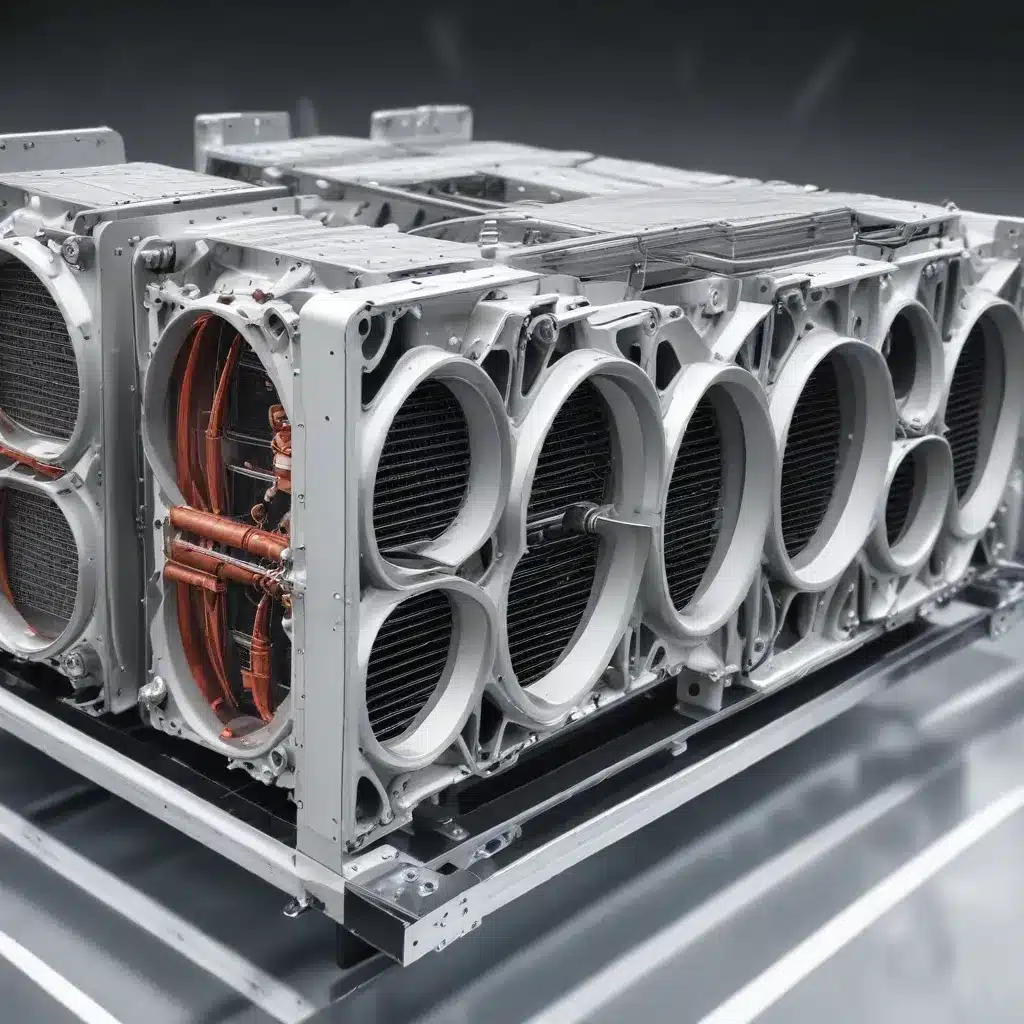
Harnessing the Power of Air-Cooled Heat Exchangers for Greener Transportation
As the world strives towards a more sustainable future, the automotive and transportation industries are under increasing pressure to reduce their environmental impact. One of the key areas where significant progress can be made is in the realm of cooling systems, where air-cooled heat exchangers play a crucial role. These versatile, energy-efficient heat transfer devices hold the key to unlocking a new era of greener, more eco-friendly transportation solutions.
Understanding the Importance of Air-Cooled Heat Exchangers
At the heart of modern automotive and transportation technology, air-cooled heat exchangers are responsible for managing the thermal management challenges that arise in various applications. From engine cooling to cabin temperature regulation, these heat transfer systems play a vital role in ensuring the optimal performance and efficiency of vehicles, locomotives, and other modes of transportation.
Advantages of Air-Cooled Heat Exchangers:
- Energy Efficiency: Air-cooled heat exchangers utilize the surrounding ambient air to dissipate heat, eliminating the need for water-based cooling systems that can be energy-intensive and resource-heavy.
- Compact Design: Their streamlined, space-saving design makes air-cooled heat exchangers ideal for integration into modern, aerodynamic vehicle architectures, where weight and packaging constraints are crucial.
- Reduced Maintenance: Air-cooled systems require less maintenance compared to their water-based counterparts, reducing the long-term operational costs and environmental impact associated with fluid changes and disposal.
- Adaptability: Air-cooled heat exchangers can be customized to meet the specific cooling requirements of diverse transportation applications, from heavy-duty trucks and buses to high-performance sports cars and electric vehicles.
Optimizing Air-Cooled Heat Exchanger Design and Performance
To ensure that air-cooled heat exchangers fully realize their potential for sustainable cooling solutions, a deep understanding of their design, engineering, and performance optimization is essential. By leveraging the latest advancements in thermal management technology, engineers can unlock new levels of efficiency and environmental responsibility.
Innovative Design Approaches
1. Fin Geometry Optimization: Researchers are exploring advanced fin designs, such as wavy, louvered, or corrugated fins, to enhance heat transfer rates and reduce airflow resistance, ultimately improving the overall thermal and energy performance of air-cooled heat exchangers.
2. Material Selection: The choice of materials, from lightweight aluminum alloys to high-performance copper-based composites, can significantly impact the heat transfer capabilities, durability, and corrosion resistance of air-cooled heat exchangers.
3. Hybrid Cooling Strategies: Combining air-cooled heat exchangers with secondary cooling systems, such as thermoelectric coolers or phase-change materials, can further boost the overall cooling efficiency and extend the operating range of transportation applications.
Computational Fluid Dynamics (CFD) Simulations
Advanced CFD modeling techniques enable engineers to virtually simulate the airflow, heat transfer, and overall performance of air-cooled heat exchangers, allowing for the optimization of designs without the need for extensive physical prototyping. This digital approach can lead to significant reductions in development time and costs, while also facilitating the exploration of innovative concepts.
Maintenance and Reliability Considerations
Maintaining the optimal performance of air-cooled heat exchangers is crucial for ensuring the long-term sustainability and efficiency of transportation systems. Regular inspections, cleaning, and preventive maintenance protocols can help mitigate issues such as fouling, corrosion, and airflow obstructions, which can degrade heat transfer efficiency over time.
Embracing Air-Cooled Heat Exchangers in Sustainable Transportation Solutions
As the automotive and transportation sectors strive to reduce their environmental footprint, air-cooled heat exchangers have emerged as a crucial technology for enabling more sustainable cooling systems. By leveraging the inherent advantages of these heat transfer devices, industry leaders can drive innovation and contribute to a greener future.
Automotive Applications
1. Engine Cooling: Air-cooled heat exchangers play a pivotal role in managing the thermal loads of internal combustion engines, helping to maintain optimal operating temperatures and improve fuel efficiency.
2. Cabin Climate Control: In both conventional and electric vehicles, air-cooled heat exchangers are instrumental in regulating the temperature and humidity within the passenger cabin, ensuring occupant comfort while minimizing the energy consumption of the HVAC system.
3. Battery Thermal Management: For electric and hybrid vehicles, air-cooled heat exchangers are essential for maintaining the optimal operating temperature of lithium-ion battery packs, which is crucial for their performance, longevity, and safety.
Rail and Mass Transit Applications
1. Locomotive Cooling: Air-cooled heat exchangers are widely used in locomotive engine cooling systems, helping to dissipate the significant thermal loads generated by powerful diesel or electric propulsion systems.
2. HVAC for Rail Vehicles: The integration of air-cooled heat exchangers in the climate control systems of trains, subways, and other rail vehicles enables efficient, energy-saving cooling solutions for passenger comfort and well-being.
3. Auxiliary System Cooling: From traction motors to auxiliary power units, air-cooled heat exchangers ensure the reliable operation of critical components in rail transportation systems.
Commercial and Specialty Vehicles
1. Truck and Bus Cooling: Air-cooled heat exchangers are essential for managing the thermal management needs of heavy-duty commercial vehicles, contributing to improved fuel efficiency and reduced emissions.
2. Off-Highway Equipment: In construction, mining, and agricultural machinery, air-cooled heat exchangers are often the preferred solution for cooling engines, hydraulic systems, and other critical components.
3. Marine Applications: Air-cooled heat exchangers find applications in marine vessels, where they are used for cooling a wide range of systems, from propulsion engines to on-board electronics and electrical equipment.
Advancing Towards a Sustainable Future
As the world continues to grapple with the pressing challenges of climate change and environmental sustainability, the automotive and transportation sectors have a pivotal role to play. By embracing the power of air-cooled heat exchangers, industry leaders can drive meaningful progress towards a greener, more efficient, and more sustainable future for transportation.
Through continued innovation in air-cooled heat exchanger design, engineering, and application, the https://www.aircooledheatexchangers.net/ team is committed to empowering the automotive and transportation industries to unlock the full potential of this transformative technology. By collaborating with industry partners and leveraging the latest advancements in thermal management, we can collectively pave the way for a more sustainable, energy-efficient, and environmentally responsible transportation landscape.

